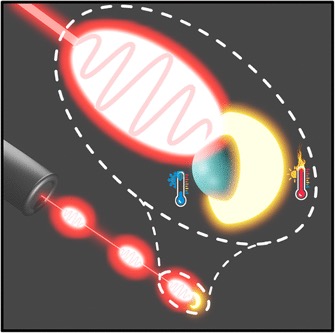Impact of the Interfacial Thermal Conductance on the Thermoplasmonic Response of Metal/Polymer Hybrid Nanoparticles under Nanosecond Pulsed Illumination

Thermoplasmonics attracts significant interest in nanoscale heat transport applications such as catalysis, biomedical nanodevices (thermal therapies for cancer treatment) or imaging. These structures rely on the heating using electromagnetic radiation and the subsequent heat transfer to the surroundings. The dynamic of heat transport depends strongly on the Kapitza resistance. When considering hybrid Janus nanoparticles, the Kapitza resistance also influences the temperature of fluids in contact with plasmonic materials (1), hence providing a mechanism to tune the heating of nanoscale regions at will. In this paper (2), we demonstrate the impact of Kapitza resistance in heating gold-polymer Janus nanoparticles using nanosecond pulse lasers, a problem of interest in thermal therapy applications in nanomedicine. We show that the Kapitza resistance controls the temperature relaxation and the temperature of the fluid in contact with the nanomaterial. We also illustrate how to implement this effect in finite element calculations widely used in practical applications.
(1) Olarte-Plata, J. D.; Gabriel, J.; Albella, P.; Bresme, F. Spatial Control of Heat Flow at the Nanoscale Using Janus Particles. ACS Nano 2022, 16, 694.
(2) Gonzalez-Colsa, J.; Bresme, F; Albella, P., Impact of Interfacial Thermal Conductance on the Thermoplasmonic Response of Metal/Polymer Hybrid Nanoparticles under Nanosecond Pulsed Laser Illumination, J. Phys. Chem. C, 2023, 127, 19152.
Authors: Javier González-Colsa, Fernando Bresme, and Pablo Albella
